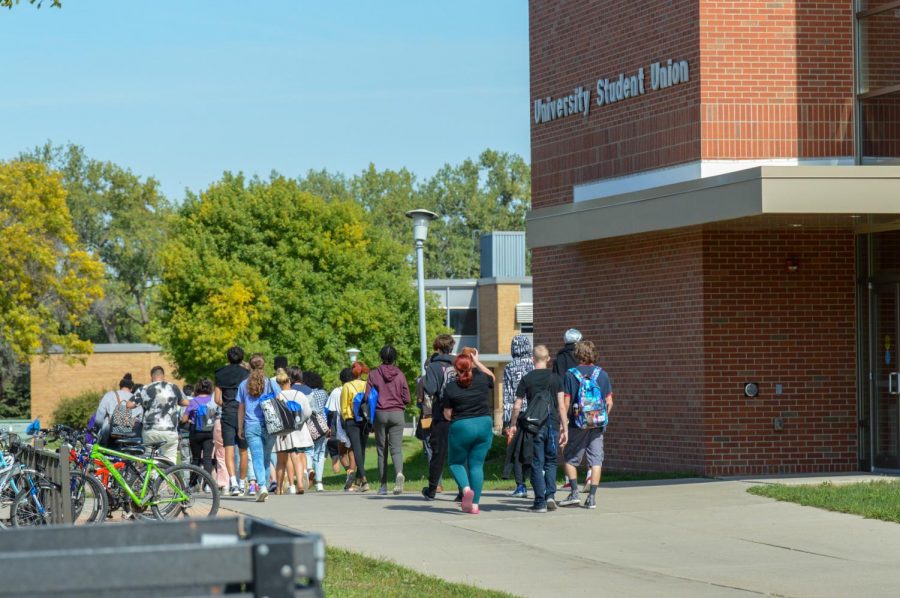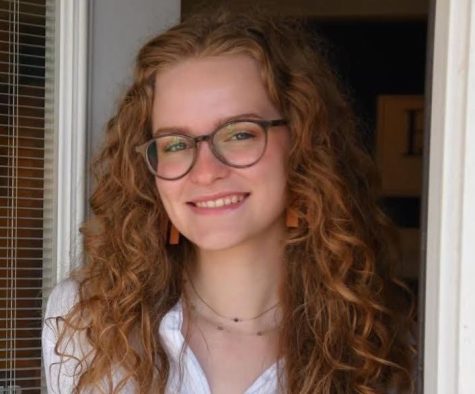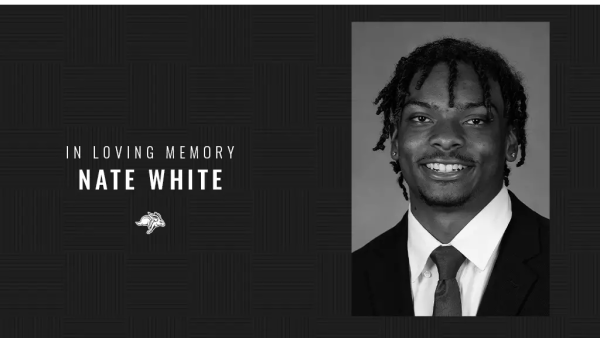SDSU hits 80% retention rate again
Enrollment numbers up, amount of credit hours down according to numbers
September 28, 2021
Last Friday, the South Dakota Board of Regents released the 2021 enrollment numbers which showed that South Dakota State University had an increase of 60 students from last year. The total number of students this year is 11,465.
SDSU’s 80% retention rate was also revealed. The retention rate– or the measure of how many freshmen students returned for their sophomore year– has been at 80% or above in the last two years. Last year, SDSU set a record of 81% retention for the school.
“We’ve had back to back years of 80% or greater, which, to my knowledge, is an all time high for us at South Dakota State,” Dennis Hedge, a provost and vice president of academic affairs, said.
In a letter sent to the campus community, President Barry Dunn said this year’s retention rates were a “tremendous accomplishment“ and on track for the Imagine 2023 university vision.
The campus is up in high school dual credit enrollment and graduate students, which heavily factored into the overall total numbers, Hedge said. 166 more high school students enrolled in dual credit classes, and the number of graduate students rose by 208 to 1,406.
Hedge credits the start of the 2+2 veterinary medicine program as a factor in graduate enrollment increase.
“There’s a cohort of 20 students in that program that would be brand new to the university,” he said.
Hedge also said that an increased emphasis on high school recruitment and student engagement helped SDSU grow and enroll more students.
“Our goal during this time is to make them feel connected to the university and feel like a Jackrabbit, and then hopefully then that will ultimately result in longer term enrollment growth,” Hedge said.
Although enrollment numbers are up, the amount of credit hours students are taking has dropped by 2.3%.
“Total credit hours continue to be impacted by students entering the university with college credits already earned through dual credit courses,” Dunn said. “In addition, while graduate student enrollment is up, these students typically take fewer credit hours than full-time undergraduate students.”
There are a few things Hedge says to help combat this. According to Hedge, maintaining recruitment events for new, transferring and international students and increasing online programs will help with continued growth.
“While there’s excitement and enthusiasm for an increase in headcount, there’s also the reality that we are indeed continuing to see some shifts and we have to stay diligent,” Hedge said.
Regardless of enrollment numbers and credit hours, Hedge said SDSU committed early to a more normal school year, which helped them communicate with students that the university was making progress to get back to in-person learning.
“We all dedicated ourselves to offering a more normal higher education experience this fall, these are challenging times,” said Brian L. Maher, the regent’s executive director and CEO. “Our public university system is prepared to meet that challenge head on, delivering South Dakota a well-educated workforce and engaged citizens.”
How do we compare?
Black Hills State University: -69 students
Dakota State University: +33 students
Northern State University: -91 students
SD School of Mines and Tech.: -59 students
South Dakota State University: +60 students
University of South Dakota: +5 students
*Enrollment numbers of fall 2020 vs. fall 2021





















